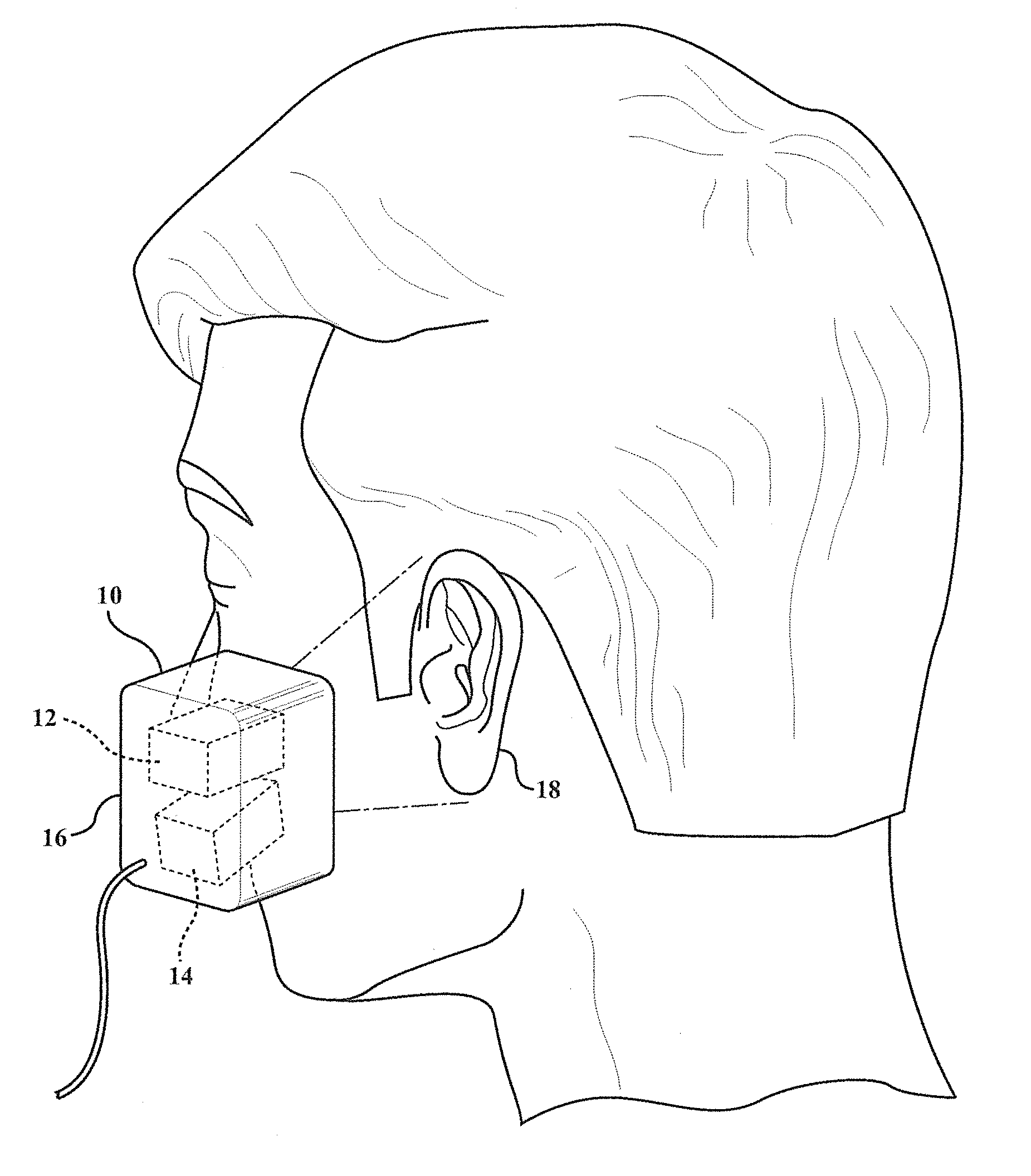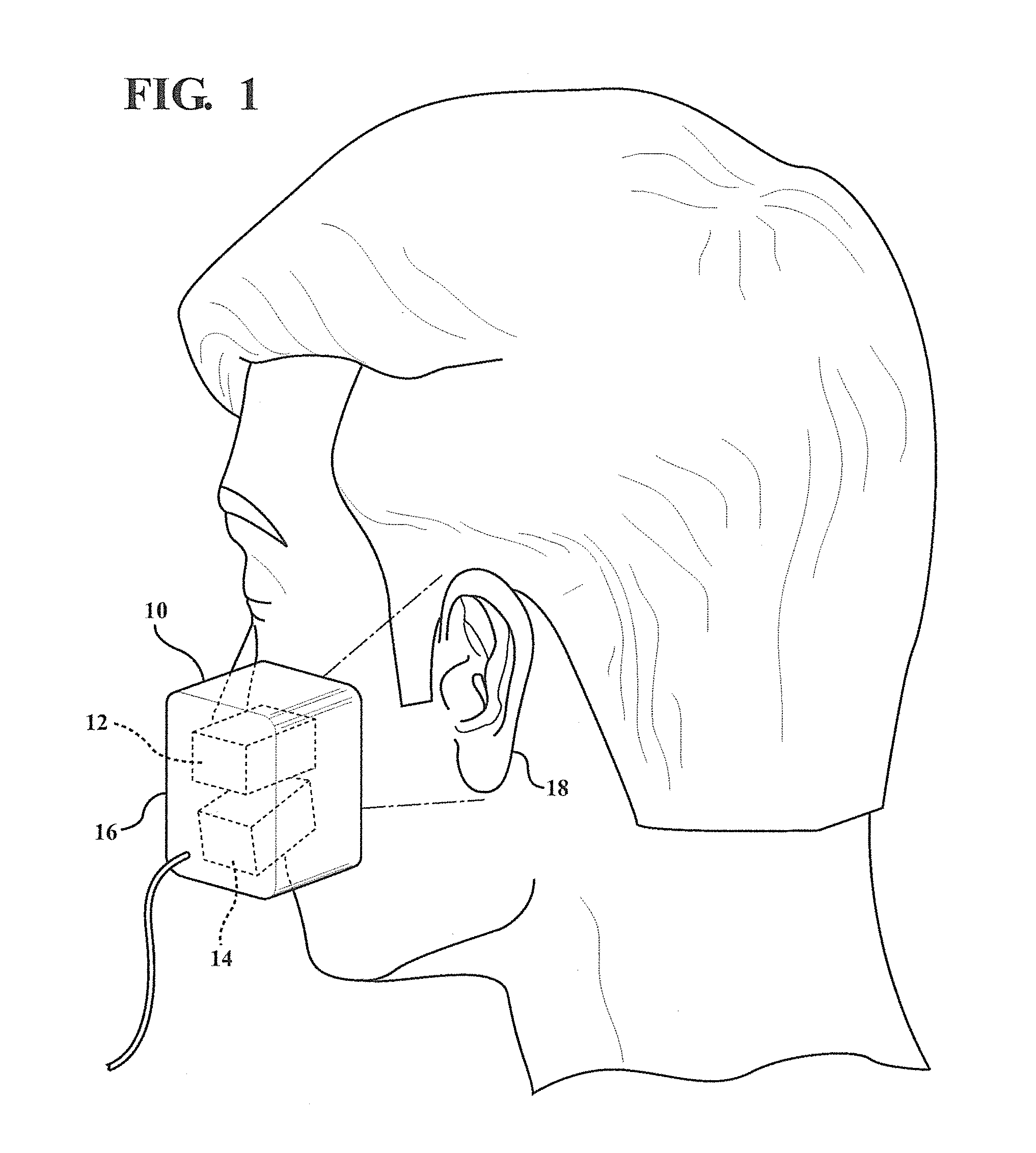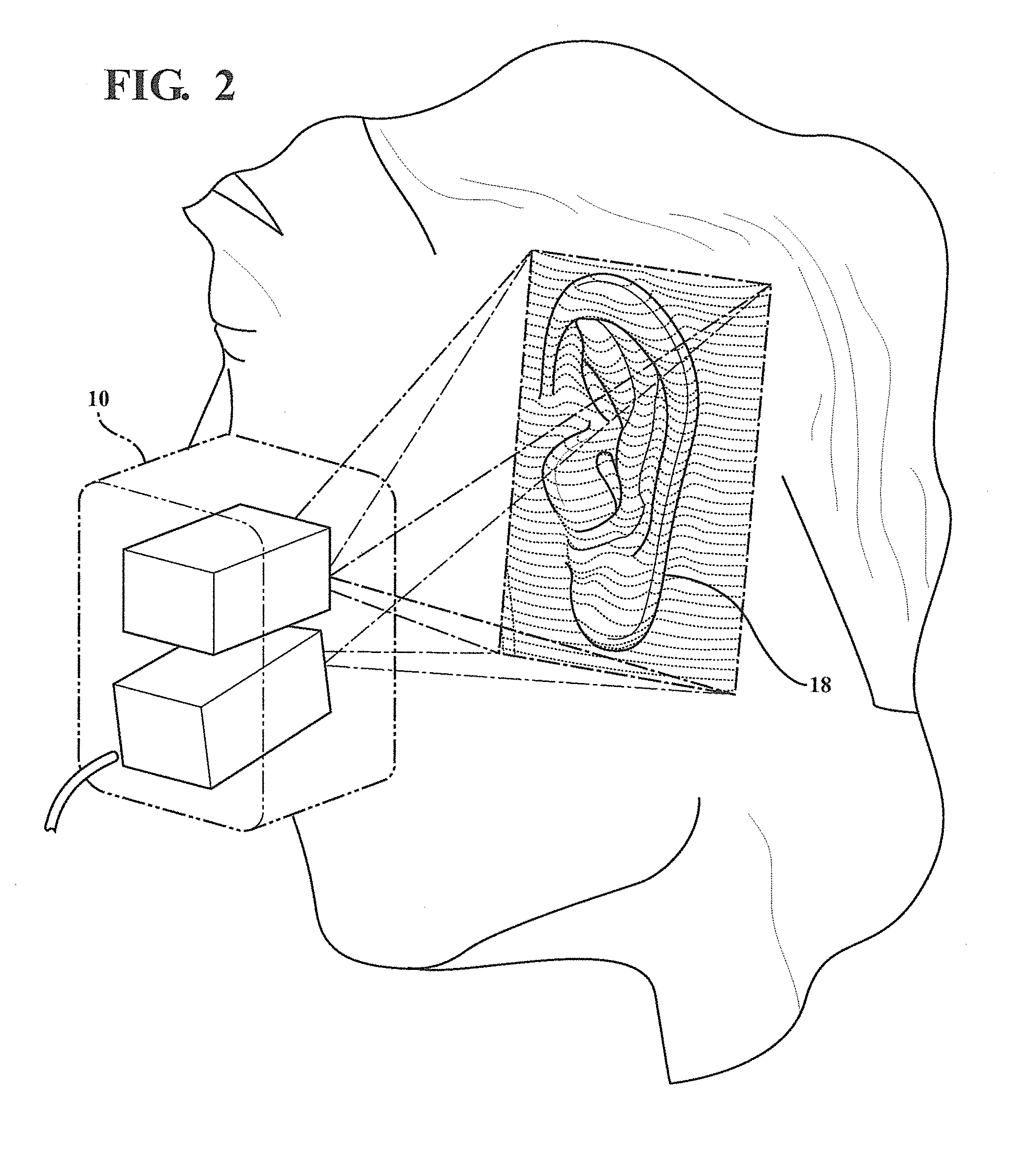Biometric identification, authentication and verification using near-infrared structured illumination combined with 3D imaging of the human ear
a technology of structured illumination and biometric identification, applied in the field of biometric identification, authentication and verification using near-infrared structured illumination combined with 3d imaging of the human ear, can solve problems such as the acquisition of devices
- Summary
- Abstract
- Description
- Claims
- Application Information
AI Technical Summary
Benefits of technology
Problems solved by technology
Method used
Image
Examples
Embodiment Construction
[0022]The ear is a unique and stable biometric subject that is invariant from childhood to old age (8 to 70) and can be used to easily and reliably identify a person. It is an integral part of the body, so it is not amenable to easy modification. The ear is not affected by facial expressions, cosmetics or eyeglasses and has important properties, such as universality, uniqueness and permanence. In addition to color differentiation, the human ear consists of several unique parts: 1. Helix Rim, 2. Lobule, 3. Triangular Fossa, 4. Cannal Interguiano, 5. Conch, 6. Crus of Helix, 7. Tragus, 8. Antihelix, and 9. Antritragus. The most famous work among ear identification was made by Alfred Iannarelli when he collected information on over ten thousands ears and found that all were different. In a set of 500 ears, only four characteristics were needed to identify the ears as being unique. Even identical twins had similar, but not identical, ear physiological features. Most of the literature fi...
PUM
 Login to View More
Login to View More Abstract
Description
Claims
Application Information
 Login to View More
Login to View More - R&D
- Intellectual Property
- Life Sciences
- Materials
- Tech Scout
- Unparalleled Data Quality
- Higher Quality Content
- 60% Fewer Hallucinations
Browse by: Latest US Patents, China's latest patents, Technical Efficacy Thesaurus, Application Domain, Technology Topic, Popular Technical Reports.
© 2025 PatSnap. All rights reserved.Legal|Privacy policy|Modern Slavery Act Transparency Statement|Sitemap|About US| Contact US: help@patsnap.com



